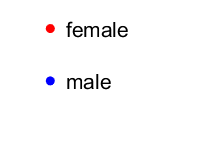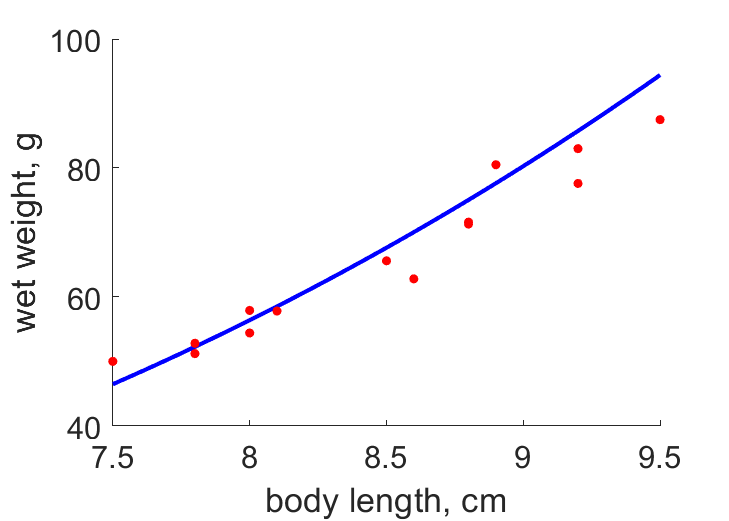Predictions & Data for this entry
| Model: std | climate: Cfb, Dfb | migrate: | phylum: |
| COMPLETE = 2.5 | ecozone: THp | food: bjO, jiCi | class: |
| MRE = 0.109 | habitat: 0jFp, jiTf, jiTi | gender: Dg | order: |
| SMSE = 0.021 | embryo: Fpf | reprod: O | family: |
Zero-variate data
| Data | Observed | Predicted | (RE) | Unit | Description | Reference |
|---|---|---|---|---|---|---|
| ab | 8 | 8.389 | (0.04859) | d | age at birth | Gunt1990 |
| tj | 120 | 168.3 | (0.4023) | d | time since birth at metam | Gunt1990 |
| tp | 1095 | 818.5 | (0.2525) | d | time since metam at puberty for females | SochOgie2010 |
| tpm | 730 | 729.9 | (0.0001737) | d | time since metam at puberty for males | SochOgie2010 |
| am | 2555 | 2555 | (0.0001231) | d | life span | SochOgie2010 |
| Lb | 0.89 | 1.095 | (0.2307) | cm | total length at birth | Gunt1990 |
| Ljb | 6.5 | 5.286 | (0.1868) | cm | total length of tadpole at metam | Gunt1990 |
| Lj | 1.9 | 1.8 | (0.05266) | cm | SVL of frog at metam | Gunt1990 |
| Lp | 5.8 | 6.035 | (0.0406) | cm | total length at puberty | Gunt1990 |
| Li | 9.5 | 9.094 | (0.04273) | cm | ultimate total length | Gunt1990 |
| Lim | 8.4 | 8.141 | (0.03082) | cm | ultimate SVL | SochOgie2010 |
| Wwb | 0.0063 | 0.005714 | (0.093) | g | wet weight at birth | Gunt1990 |
| Wwj | 0.7 | 0.6422 | (0.0826) | g | wet weight at metam | Gunt1990 |
| Wwp | 20 | 24.21 | (0.2106) | g | wet weight at puberty | Gunt1990 |
| Wwi | 87.5 | 82.82 | (0.05344) | g | ultimate wet weight | Gunt1990 |
Uni- and bivariate data
| Data | Figure | Independent variable | Dependent variable | (RE) | Reference |
|---|---|---|---|---|---|
| tL_f |   | time since metam | SVL | (0.06592) | SochOgie2010 |
| tL_m |   | time since metam | SVL | (0.05887) | SochOgie2010 |
| LN |  | body length | number of eggs | (0.1674) | Gunt1990 |
| LW |  | body length | wet weight | (0.05035) | Gunt1990 |
Pseudo-data at Tref = 20°C
| Data | Generalised animal | Pelophylax esculentus | Unit | Description |
|---|---|---|---|---|
| v | 0.02 | 0.0725 | cm/d | energy conductance |
| kap | 0.8 | 0.4765 | - | allocation fraction to soma |
| kap_R | 0.95 | 0.95 | - | reproduction efficiency |
| p_M | 18 | 50 | J/d.cm^3 | vol-spec som maint |
| k_J | 0.002 | 0.002 | 1/d | maturity maint rate coefficient |
| kap_G | 0.8 | 0.8017 | - | growth efficiency |
Discussion
- tadpoles are assumed to differ from frogs by del_M only
- males are assumed to differ from females by {p_Am} and E_Hp only
Facts
- The fertile hybrid of P. ridibundus and P. lessonae is called P. esculentus; mostly diploid, but also triploid (Ref: Wiki)
Bibliography